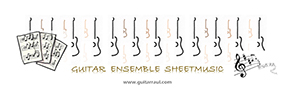Middle Tennessee State University May 2018
Christopher E. Pfeifer
This thesis traces the developments in the Russian and Eastern European classical guitar community after the dissolution of the Soviet Union in 1991, after which political circumstances supported increased access to Western resources. Six-string guitar performers from Russia and former Soviet Eastern European states are afforded primary attention over players of the seven-string Russian guitar (semistrunnaya). This is an introduction to Russia’s and Eastern Europe’s evolution from non-essential in the global classical guitar community, to its current status as a source of many of the world’s most influential guitarists. The subjects of this thesis are recognized as part of the New Russian and Eastern European School of Guitar by their individual successes in major
international guitar competitions in the twenty-first century, shared educational background and geographic origins, and overall success as classical musicians. This is not intended to be an exhaustive account of every Russian and Eastern European guitarist.
The new school of russian eastern and european classical guitar





